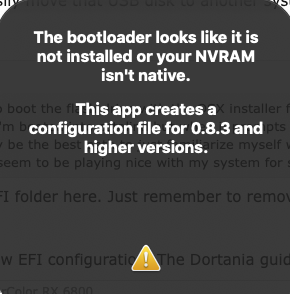Hi
@CaseySJ, Hi All,
I created the installation USB drive for macOS Monterey using the folder You provide (Thanks!

) in the Opencore 0.8.3 Mini-Guide (choosing the AMD-GPU config.plist file and setting the System Product Name with iMac 19.1 as in my current system).
Unfortunately, testing it before starting the installation I verified that trying to boot Windows 10 Pro from Opencore menu the system seems to stop at the "Gigabyte" boot screen. Instead it seems to work for booting Ubuntu.
Currently my multiboot system on separate drives (Windows 10, Ubuntu, macOS Catalina/macOS Big Sur) based on Opencore 0.70 works fine with all OSs.
Has anyone experienced the same problem?
Any idea how to fix it?
Thanks in advance for Your help


